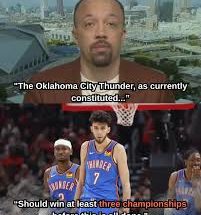Jon Scheyer has had his fair share of wins since taking over as the head coach of Duke basketball. From securing top-ranked recruiting classes to making deep postseason runs, Scheyer has kept the Blue Devils among the elite programs in the country. But on Sunday, the Duke head coach experienced one of the more painful moments of his young coaching tenure—a major recruiting loss that could have significant ripple effects across college basketball and the ACC landscape.
The loss wasn’t just about missing out on a top prospect—it was about losing a foundational piece that Scheyer and his staff had targeted for months. A player they envisioned as not only a starter but a star. A future lottery pick. A game-changer. That player chose to take his talents elsewhere, stunning fans, analysts, and insiders who had all but penciled him into Duke’s 2025-26 roster. In the hypercompetitive world of high-major recruiting, nothing is ever guaranteed, but this one hurt.
The recruit in question—whose name carries weight in every gym from California to New York—opted to commit to a rival blue blood program. In doing so, he bypassed the opportunity to join a storied lineage of Duke greats and instead aligned himself with a different legacy. For Scheyer, who had developed a strong relationship with the player and his inner circle, the news was a bitter pill to swallow.
What makes this setback particularly stinging for Duke is that it wasn’t for lack of effort. Scheyer and his staff had gone all-in, attending nearly every game during the last AAU circuit, hosting multiple visits, and even tailoring parts of their system to show how the recruit could fit into their 2025 and 2026 plans. In recent interviews, the player had praised Duke’s culture, Scheyer’s leadership, and the appeal of playing at Cameron Indoor Stadium. All signs pointed to Durham—until they didn’t.
Sources close to the recruitment suggest that a late surge by the eventual landing school, combined with a compelling NIL package and a strategic pitch about long-term development, may have swayed the player’s decision. While Duke is no stranger to the NIL era, and has had success with high-profile deals for stars like Cooper Flagg and Caleb Foster, the landscape is evolving quickly. Schools are finding new and creative ways to entice talent, and on Sunday, Duke simply got outplayed.
This loss doesn’t signal doom for the Blue Devils, but it does highlight the razor-thin margins at the top of college basketball recruiting. One decision can shift the balance of power. It can alter future lineups, rotations, and even postseason potential. For a coach like Scheyer, who’s only been at the helm for a few years, every class is critical to establishing and sustaining momentum.
This particular recruit was viewed as a cornerstone. A 6-foot-9 forward with guard skills, elite vision, and a high basketball IQ. He could shoot from deep, break defenders down off the dribble, and anchor a defense with his versatility. His game drew comparisons to Jayson Tatum, another Duke legend who once lit up the ACC before becoming an NBA All-Star. Adding a player like that to an already loaded pipeline would’ve solidified Duke as the team to beat in the coming seasons.
Now, Scheyer must pivot. Recruiting is a never-ending cycle, and there are still plenty of elite players available in the 2025 and 2026 classes. But losing your top target always leaves a scar, no matter how deep the bench is. It also raises questions about the next steps—will Duke shift its focus to a late bloomer, double down on international scouting, or push harder for a reclassification candidate? The answers will emerge in the weeks ahead.
There’s also the emotional toll. Recruiting isn’t just about evaluating talent—it’s about building trust. Scheyer had invested countless hours into this recruitment. So had assistant coaches, analysts, and support staff. For it to end with a public and somewhat surprising decision announcement from a different program is deflating. The social media reaction was immediate, with fans expressing a mix of shock, frustration, and disappointment. For every “we’ll be fine” comment, there were just as many “how did we let this happen?” responses.
Duke’s brand remains one of the most powerful in sports. Cameron Indoor remains a cathedral of college basketball. And Jon Scheyer remains one of the brightest young minds in the game. But moments like this are reminders that even the most iconic programs are not immune to setbacks. Even the most prepared staffs can get blindsided. Even the most loyal fanbases can feel rattled.
Recruiting has changed dramatically in the past five years. NIL, the transfer portal, and constant media coverage have turned it into a high-stakes arms race. Relationships still matter, but they are now just one of many variables. The programs that can adapt quickly and consistently win these battles will shape the future of the sport. Scheyer knows that. And while Sunday’s loss stings, it also sharpens the focus for what comes next.
There’s also a silver lining in adversity. Past Duke teams have often fed off slights and setbacks. The missed recruit could serve as motivation for returning players to step up. It could also open up playing time for an under-the-radar freshman or sophomore to emerge. One door closes, another opens—sometimes unexpectedly.
In fact, several former Duke stars have spoken about how they only ended up in the spotlight after other recruits went elsewhere. From Nolan Smith to Justise Winslow, the program has a history of turning Plan B into headline acts. Scheyer will now look to do the same.
In the short term, Duke will focus on wrapping up its current roster, managing possible NBA Draft declarations, and preparing for the offseason workout schedule. There’s also the upcoming summer recruiting period, where Scheyer and his staff will no doubt be aggressive in reshaping their board and reigniting conversations with other top targets.
This loss may prompt deeper questions as well—about how Duke structures its NIL efforts, about whether they need to adjust their pitch for the modern recruit, and about how they can ensure they don’t get caught flat-footed again. The stakes are too high to not adapt.
But if history is any indication, Duke won’t stay down for long. The program is built on resilience, and Scheyer has already shown he’s capable of bouncing back from tough moments. He learned under Mike Krzyzewski, arguably the greatest coach in college basketball history, and that foundation won’t crack over a single missed commitment.
Still, Sunday marked a turning point of sorts. A reminder that the next phase of college basketball will be as much about navigating volatility as it is about executing gameplans. That even the most buttoned-up programs can suffer gut punches. And that in the high-wire act of elite recruiting, the margin between elation and heartbreak is measured in inches.
Jon Scheyer, ever the competitor, will likely treat this loss the same way he treats every game—a chance to learn, to grow, and to come back stronger. But for now, Sunday will be remembered as a day when Duke came up short. A rare defeat on the trail. A reminder that in this era, nothing is promised—not even for the Blue Devils.



